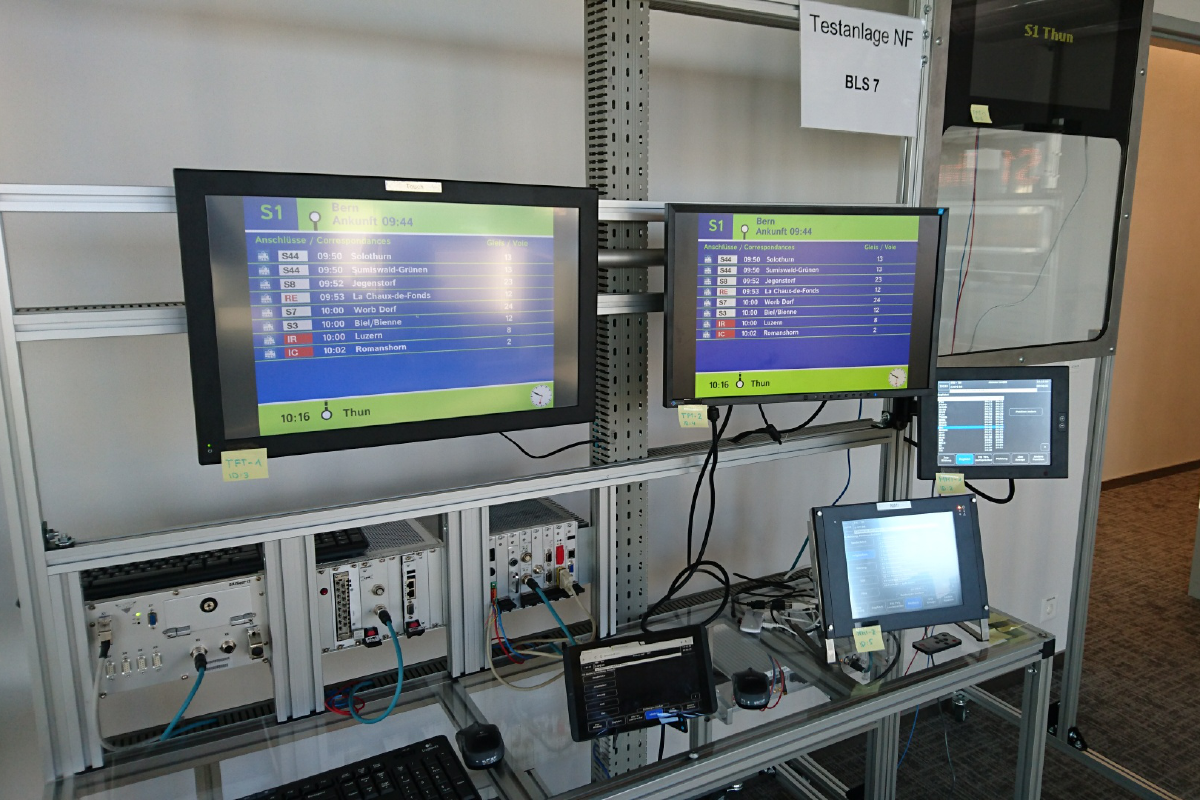Customer information
BLS - Proof of Concept ICT in the vehicle
IT systems used for implementing passenger information systems in train fleets are currently complex and not very modular, with many interdependencies. Changes to the form and content of customer information, as well as the necessary hardware and software, are expensive. For this reason, BLS has commissioned us to develop a lighter architecture as part of the procurement of the new fleet. This architecture should lead to a reduction in complexity and dependencies, and be implemented in the form of a proof of concept (PoC). The goal of the “PoC ICT in the vehicle” was to improve flexibility in customer information output through the use of current technologies and thus demonstrate potential cost reductions.
Challenge
The market for vehicle-based customer information systems is currently characterized by proprietary solutions, outdated technologies, inadequate performance, and high maintenance costs.
The PoC served to validate the following objectives:
- Hardware-independent, documented software
- Better hardware performance
- Tested architecture from the industry
- Supplier independence
- Use of standard components
- Standardized interfaces
- Improved expandability
- Modularity and flexibility
- Improved monitoring of the entire system
- Improved testing capabilities
- Decreasing operating costs
Solution
“As part of the PoC (consisting of 5 sprints of 2 weeks each), a complete passenger information system including connection to the central system was developed. Corresponding software components were developed and tested in accordance with IBIS-IB (VDV 301) standards. It was demonstrated that it is possible to build a TrainServer with virtualized passenger information services, replace specialized displays with standard industrial TFTs, and use the web browser as the display unit for passenger information and the touch interface as the MMI.
The connection to the central systems (FMSX / FIS / CUS) was also implemented. In addition to the technical information (e.g. train identification, train cancellation), log and monitoring information was provided and visualized to the central system. Schedule data as well as last-minute information (connection information, disruptions, etc.) were obtained from the central system and displayed on the passenger information system.
The following services were implemented
Specific APFZ PoC specialized services (own services):
- HTMLDisplayService
- MMIDisplayService
- HeadquatersCommunicationService
- BLSCustomerInformationService
Implemented VDV Services:
- 9.3 DeviceManagementService
- 9.9 SystemDocumentationService
- 9.10 SystemManagementService
- 9.12 TimeService
Fazit / Erkenntnisse
The passenger information system and MMI / FIS terminal can be implemented using HTML5/Websocket, and the browser can be used as an audio player. The browser is well-suited for use in full-screen mode (Chromium). The basic services DMS, SDS, SMS of the VDV 301 provide a good foundation. VDV CIS requires an “intelligent” display, which was not desired in the PoC.
BLS AG was founded in 2006 and connects people, regions and places. As one of the largest transport companies in Switzerland, it operates an extensive network in regional passenger rail.
bls.ch
Are you interested in the open ICT architecture on the vehicle? I would be happy to tell you more about it.
Co-Lead Mobility
Current reference projects
Our digital solutions and services in passenger and goods transport.

